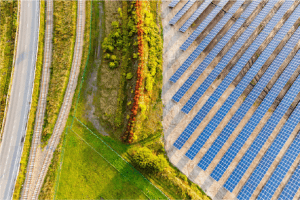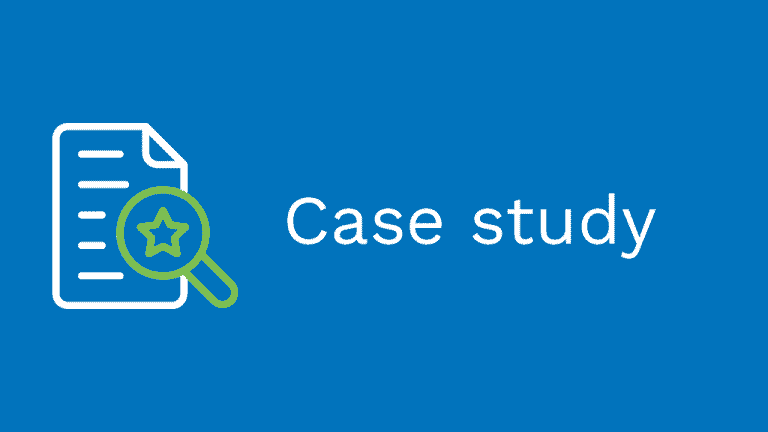
6 Steps to Sustainable IT
How Google and Citrix are helping companies go Green with Chrome If there’s only one good thing that comes out of a recession, it’s a reduction in greenhouse gas emissions (GHG). With fewer people commuting to the office, the financial crisis of 2008/2009 caused carbon dioxide emissions (CDE) to fall to levels not seen since 1990. The Covid-19 pandemic and subsequent lockdowns in 2020/2021 brought back a lot of the same trials and tribulations for all of us, and worse. However, the spike in remote working caused a rapid improvement in air quality as traffic-free roads helped clear nitrogen dioxide levels in “smog-choked” urban areas, reducing the strain on our lungs as well as the environment. Now as we start returning to a semblance of normality, businesses have an opportunity to continue practising the important lessons we learned during the tough times. Adopting cloud computing using Chromebooks and Citrix is just one way we can make this “new normal” a green one. 1. Buy devices that work better for longer All Chrome devices released since the start of 2020 now benefit from an extended 8-year Auto Update Expiry date, meaning they’ll receive the latest features and fixes for nearly a decade. As Google continues to make improvements to the OS every six weeks, Chrome devices (and the cloud workers who use them) become more efficient over time. And, with a variety of devices designed to survive military-level conditions, you can be sure Chromebooks are built to last. When technology is seen as a useful tool rather than a hindrance, end users are happier and more productive, saving the business money from one perspective, and making more money from another. 2. Consider your power consumption Traditionally, every endpoint had to be self-sufficient in terms of its ability to run everything users needed on-device. Academic research finds that Chrome OS devices consume 57% less energy than comparable notebooks running alternative operating systems.(1) Reducing your organisation’s energy use doesn’t stop at your end user’s device. Moving to a carbon-zero cloud infrastructure means you can remove those inefficient on-prem data centres (which accounts for 3% of global electricity use) and drastically reduce your office’s own carbon footprint. Google Cloud Platform now makes it even easier for businesses to improve their green credentials by showing customers which data centres use at least 70% renewable energy. 3. Facilitate working from home where possible Transport accounts for a third (34%) of all carbon dioxide emissions in the UK, peaking in 2007 before the financial crisis. Although we’re back on a downward trend thanks to improvements in car fuel efficiency and lower traffic growth caused by the recession, there are real-world benefits to WFH beyond employee satisfaction and better work/life balance. The average commuter travels 18 miles to work, accounting for 14% of annual global GHG emissions. Allowing just 1,000 employees to work from home two days a week would reduce annual commuting mileage by over 1 million miles and cutting CO2e generated by staff travel by 40% – That’s nearly 500 cubic tonnes of greenhouse gases each year!(2) Chromebooks played an integral part in facilitating WFH during the pandemic. Coupled with Citrix Workspace to securely access legacy applications from anywhere, information workers had all the tools they needed to stay productive and continue collaborating with colleagues. 4. Give time back to your IT staff When nearly 56% of IT engineers said they don’t have the time to make sustainability possible in their organisation, it became clear they are victims of legacy technology that works against them rather than for them. Chrome devices save as much as 76% of the time it takes to provision and deploy to end users compared to Windows 10, and with many admin processes streamlined or automated for them, Chrome gives IT staff time back to focus on innovating for their business rather than firefighting otherwise remedial tasks. Saving time where possible is important to IT engineers, but when that translates to 63% lower administrative costs and a quarter less on support and maintenance costs, deploying the right devices saves businesses money whilst saving the environment, too. 5. Empower staff with the tools they need Chrome OS is a relatively young operating system, so it’s no surprise there are many businesses that have developed in-house applications built just for Windows. Although there are millions of Android and SaaS apps that might be able to replace some of those, it can be an unwanted change that might prevent a number of businesses from adopting the cloud-based OS. Citrix Workspace allows users to access any Windows app from their Chromebook and provides an extra layer of security and control over exactly what your cloud workers can do on their device whilst working remotely. Although legacy apps often don’t meet current best practices, it’s good to know there are options out there that give you the best of both worlds. Citrix are committed to wholly removing 50 million tons of carbon dioxide equivalent from the air across their 100 million users worldwide. It would take 67 million acres of forest to remove the same amount of CDE from the atmosphere. 6. Invest for the future Corporate social responsibility (CSR) is becoming increasingly important for all businesses, with nearly 90% of large organisations ranking sustainability as a high or medium priority. Even going back to 2015, Fortune 500 companies were spending billions putting these good intentions into practice. It’s not wholly selfless, however, with the World Economic Forum reporting up to a quarter of a company’s market value lies in its reputation. This comes as no surprise considering 81% of consumers feel strongly that businesses of all sizes should help to improve the environment. Creating an IT ecosystem that reduces emissions shows that your company is serious about sustainable development, helping attract investors, make or break acquisitions, and bringing in top talent that will drive your organisation into the future. Want to know more? Visit our Chrome Enterprise section > References (1) Sutton-Parker, J. (2020), ‘Determining


